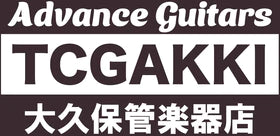The Martin dreadnought is the greatest icon in the acoustic guitar world. The D-45, D-28, D-35, and D-18 models are always present at the moments that change the course of history. There must be many people whose lives have been turned around by the tones produced by these guitars held by artists. You have probably seen dreadnoughts in various situations: at live performances, on CD jackets, in magazines, and in music stores.
By the way, what color was that guitar?"
Is this a foolish question? Of course it is natural. However, in this world, there are front and back, light and shadow. Do you know that behind the color that you have taken for granted is the existence of the rare "Shaded Top"?
Today, there are only one or two shaded tops in the whole of Japan. This column is about Martin's pride and joy, "Shaded Top," and this is not a modern reissue item, but a collection of eight originals representing the era. I can say with certainty that this is a longtime project of TC Musical Instruments. As of this writing, we have the largest collection of vintage "Shaded Top" instruments in the world. We would like to introduce the guitars of "Shaded Top" that we have all been involved in.
